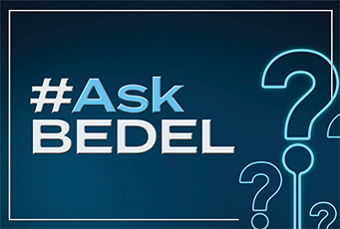It’s winter in Indiana! Hit a pothole hard enough and you might end up with a pricey bill for the repair. Or, what if your furnace dies when temperatures are in the teens? Do you have an emergency fund to cover those scenarios?
Emergency Fund 101
An emergency fund is a separate pool of money designated for unexpected costs such as health emergencies, job loss, and essential home and automobile repairs. An “emergency” should meet three characteristics. It must be unexpected, necessary, and urgent. And, no, a vacation to Hawaii or a sale at Saks doesn’t qualify! An emergency fund is a cash safety net. When an emergency strikes, you won’t have to drain your bank account or run up your charge cards.
While an emergency fund seems like a no-brainer, 47 percent of Americans say they can’t afford even a $400 emergency expense (2015 Federal Reserve Report). That’s far short of the approximately $3,940 it would take for a new furnace (Home Advisor) or the $2,782 the Federal Reserve report found to be the mean, out-of-pocket amount responders paid for unexpected medical expenses.
So how much should you put aside? The general rule of thumb is three to six months of living expenses. Accumulating this amount will allow your emergency fund to get you through a temporary loss of income as well as handling sudden unexpected expenses. You’ll need to tally all your fixed living expenses such as mortgage or rent, utilities, insurance, groceries and other essentials to calculate that number.
Make sure you can easily access your emergency fund. When faced with an emergency, the last thing you need is a barrier to your money. Easy access makes checking and savings accounts ideal for emergency funds. Just be sure to open a separate, dedicated account!
Another factor to consider is potential return. In today’s low interest rate environment, your best bet may be to ditch the traditional brick-and-mortar institution and head online. Online banks save on overhead costs which allow them to offer perks such as higher interest rates on savings accounts.
Starting is the Hardest Part
If you don’t have an emergency fund equivalent to three months of expenses, you’re not alone. According to the Financial Industry Regulatory Authority, 56 percent of people in the U.S. are in the same boat. Putting together three months or more of living expenses seems like a daunting task. The important thing is to start.
The traditional method is to earmark a percent or dollar amount from each paycheck for the fund. As soon as you receive your paycheck, transfer that amount to your emergency fund or better yet, have the designated amount direct deposited to your emergency fund account. After you’ve paid the bills and made retirement contributions, the rest is yours to spend!
This method will require you to create or, at the least, reexamine your current monthly budget. If you don’t see how it’s possible to allot money to your emergency fund, look again. You may be able to scale down some budget line items. Do you really need to spend all that money you initially allocated toward entertainment or clothing?
To make the process more manageable, break your overall goal into smaller goals. For instance, measure progress in terms of $500 or $1,000 increments. You’ll work your way to your goal in no time!
Want to give your emergency fund a boost? Designate one-time income sources such as work bonuses, tax refunds, and holiday and birthday money for your fund. You can also hold a garage sale or save your spare change and small bills to grow your fund. Be creative!
Stay the Course
Once you’ve accumulated a sizeable amount of savings, you may feel tempted to splurge on the latest iPhone or treat yourself to that Hawaii vacation. Don’t do it! Self-discipline is necessary in moments like these. If you’re tempted to spend the fund on non-emergencies, consider opening a new account specifically for this and setting a new savings goal to satisfy your desires. And if you do give into temptation, remember to replace those used funds!
Summary
When it comes to the future of your financial stability, dedicated emergency funds are a great way to prepare for the unknown. Set aside money each month so you can rest easy at night knowing you’re able to handle whatever surprises are in store.
As Theodore Roosevelt once said, “Make preparations in advance – you never have trouble if you are prepared for it.”





